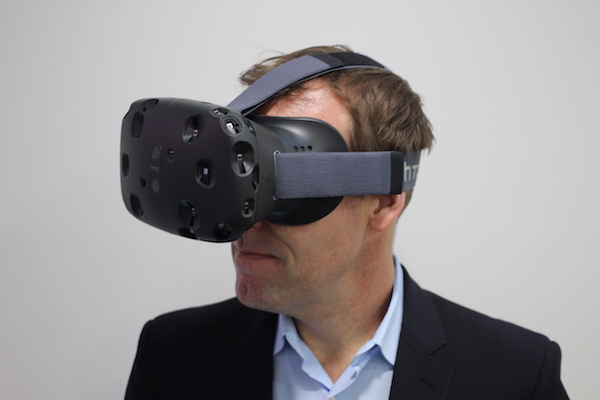Is Virtual Reality (VR) The New Classroom?

We live in a world filled with devices that once were only found in science-fiction stories. For example, recent advances in VR technology could take our interpretation of what the ‘classroom’ is to a radically new place. Tracking systems and headsets with input devices can transport users to a digital playground where anything is possible. This cutting edge tech and all of its applications are simply astounding, and today we’ll be taking a look at how this equipment works, how this new technology can be used in the classroom, and why it’s well suited for schools today.
Our previous, now outdated concept of what a ‘virtual reality’ constitutes was once simply a computer and the digital space it provides. Today, the meaning of true VR is much more interesting. Using a head mounted display coupled with audio speakers and some sort of input devices, virtual reality has become a tool that has the ability to transport users to a completely virtual environment.
The realism of the experiences these systems can provide is absolutely astonishing. What your body sees and hears makes up what it believes, and using a virtual reality headset, one can be taken anywhere a designer creates. Experiences are so potent that they can cause nausea, but this is only in the most extreme of cases. While VR is best used in short bursts, it could be the next big thing for education. This technology has only recently become widely available to the public at a reasonable price, and developers are only just beginning to design in-depth and fleshed out experiences.
While most development for VR is focussed on gaming, there are plenty of companies working on a number of different experiences designed for a variety of different applications, and fortunately, this includes learning. for learning. The Google Expedition Pioneer Program provides such fully immersive experiences. Google has designed ‘field trips’ to places throughout history, such as something so grand as the Great Wall of China, or a simple nature walk through a forest. VR can bring such places to life in a way that is as close to firsthand experiences as possible. It allows for the rich cultural experiences allowed by traditional field trips, but at a much lower price point and logistical demand. Beyond Google and their program, VR has the ability to create entirely new environments, rather than recreate real ones. In a classroom powered by virtual reality tech, an instructor has the opportunity to make and control an environment free of distractions and engaging for students of any age. Distractions like cell phones are eliminated when students are wearing headsets through which they view a virtual world. Imagine showing students a painting, up close and personal, while listening to a recorded voice describe it. That’s much more engaging than reading about said painting in a textbook.
Kids now are advanced and much more used to technology than the youth of yesterday. They’re inclined towards digitalization and embrace new advances in technology very quickly. They’re products of the information era we live in, and this fact makes them very well suited to learning through virtual reality. Not only does digital learning provide a more engaging experience free from distraction, it’s much more interesting to the students themselves. Children, and adults too, react much better to active learning rather than passive learning. And, with this technology becoming more affordable for school administrations to purchase and maintain, it’s the perfect time for instructors to begin using this wonderful tool. It can be useful in all subjects, too. Imagine being able to explain physics using more immersive demonstrations of how gravity near Earth affects orbiting objects by taking students into space! Or even just having a music class view a ‘live’ concert by a famous musician. Possibilities are endless. Students being able to manipulate and observe objects up close can help them generate a much better understanding of said objects than reading about them in a textbook can. When something can’t quite be understood by simply reading about it, actually experiencing it in a more personal way may just be enough to get the point across.
Equipment like this certainly has the ability to make a real difference in the classroom if used correctly. Already teachers have used the tech to take students on virtual field trips created by Google, and more experiences are fast on the way. Getting this technology into the hands of teachers could make a huge impact on the quality of learning throughout the world. With the ability to take students anywhere in the world through a headset, the possibilities for an increasingly-inclusive and encompassing education abound. Students today use technology in their lifestyles all the time, and a hybrid of virtual and traditional teaching styles could go a long way in helping young people learn. Virtual reality isn’t just a fancy of science fiction anymore. It’s exciting, it’s engaging, and it’s here today.